There’s no such thing as a “cheap” new Bugatti. A standard Chiron—if you can even call one standard—starts at just under $3 million. Then there’s the Chiron Sport variant, which tacks a few hundred grand onto that number, and options like the Sky View roof and colored carbon-fiber body panels raise the price even further. Finally, there’s the Divo, which is a limited-run model based on the Chiron that’s focused on track performance and costs just shy of $6 million. But today at the Geneva auto show, Bugatti has revealed a one-off car that truly does make the rest of its lineup look cheap and basic. It’s called La Voiture Noire, and Bugatti says it’s the most expensive new car of all time, costing its owner $12.5 million before taxes (or $18.9 million including them).
Before we can start talking about the new car and the justification for its price, though, we have to give a little history lesson. Starting in the 1930s, Bugatti introduced the Type 57, which was produced in many different forms. There was a racing version, a four-door sedan (the Galibier), a convertible (the Stelvio), a two-door sedan (the Ventoux), and a two-door coupe (the Atlanté), with many of the chassis being sent to coachbuilders for uniquely styled bodies. Finally, there were the 57SC Atlantics, spectacular coupes spawned from a concept called the Aérolithe; just four Atlantics were built, with each getting its own specific design. Technologically advanced in terms of design and production and able to reach top speeds of 125 mph, the Atlantics were instant icons. Of the four, the most legendary is the second car, which was Jean Bugatti’s personal example. Called La Voiture Noire (literally “the black car”), the Atlantic was used in Bugatti’s promotional materials and was only driven by Jean and a select few racing driver friends. After 1938, though, the car seemingly disappeared without a trace. The most widely accepted theory—endorsed by Bugatti—is that it was moved to a safer part of France when the Germans invaded Alsace, although some say the car was given to one of those racing drivers in 1939 and shipped to Bordeaux in 1941 with a different chassis number affixed. Either way, the Atlantic has never been seen since. If Jean’s Atlantic still exists and has been hidden away in a French barn for the past 80 years, it would be worth in excess of €100 million if found today.


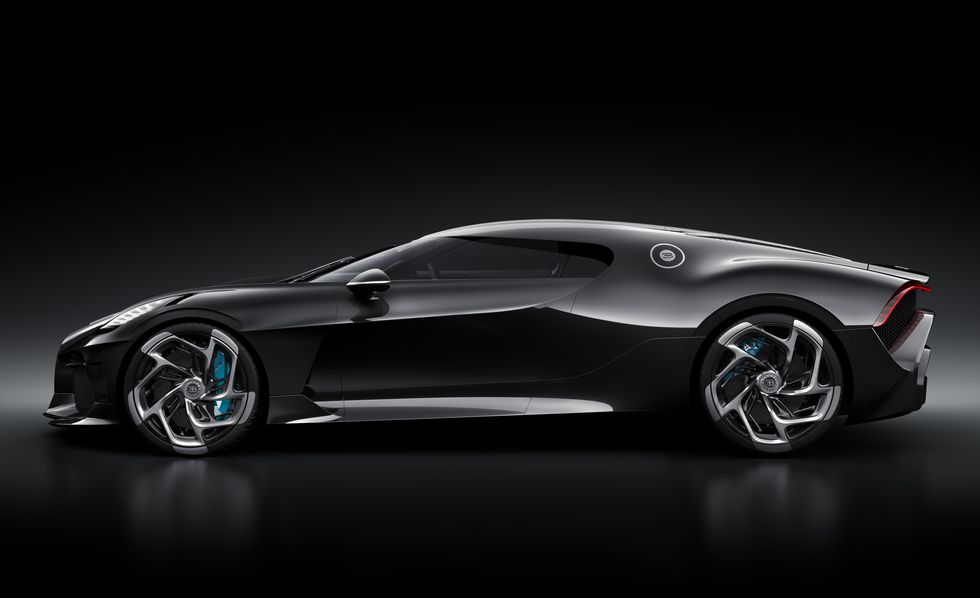
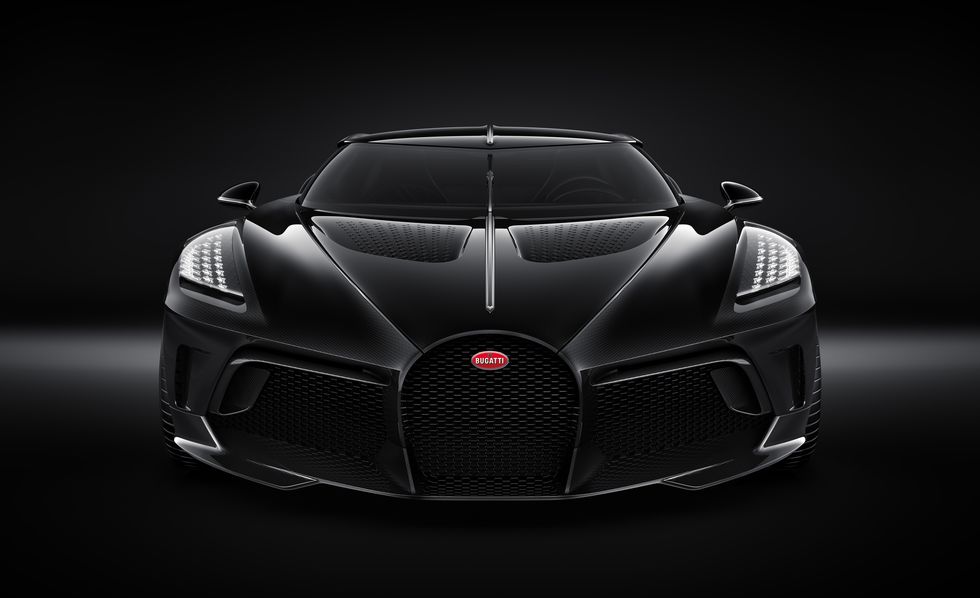
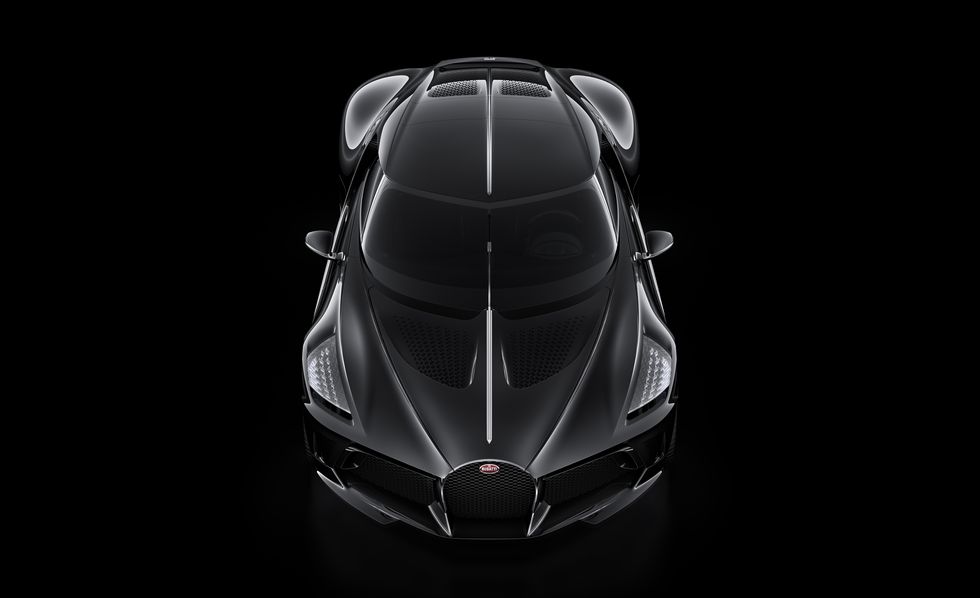
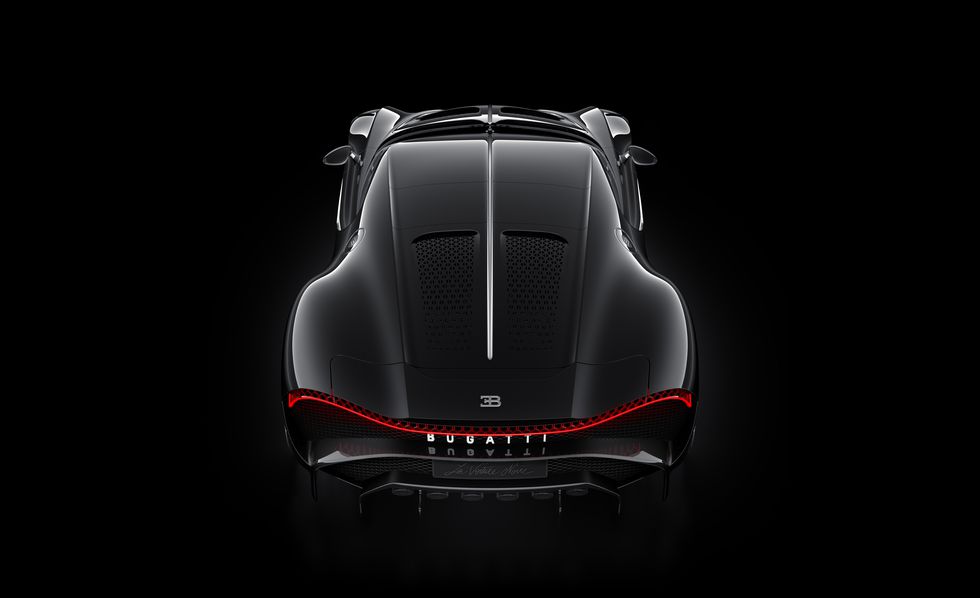
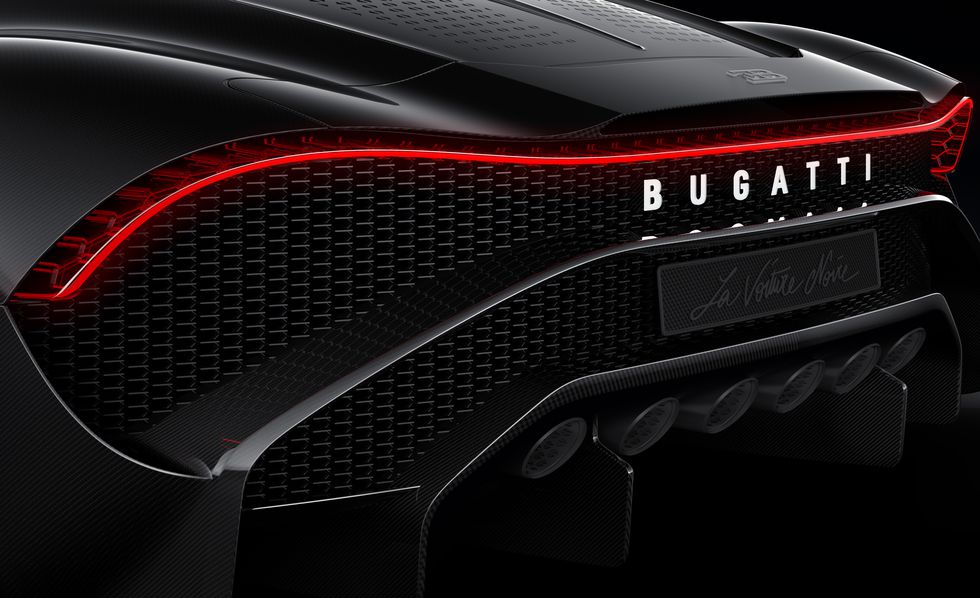
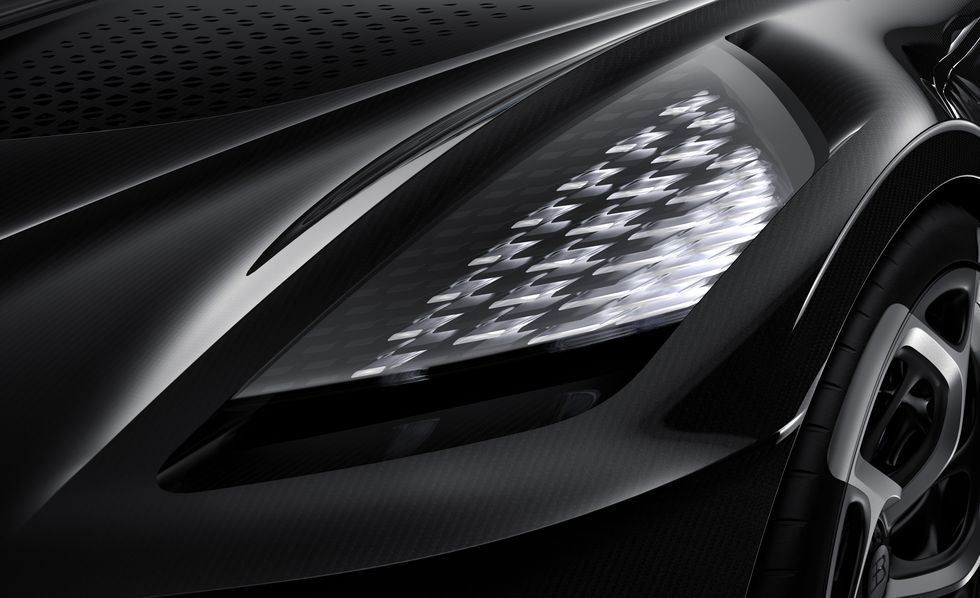
The Lost Atlantic, Modernized
As evidenced by its name, the modern La Voiture Noire has been heavily inspired by that lost Atlantic (check out the loop below for a comparison). Bugatti says the customer who bought the car is fascinated by the Atlantic, and wanted a car that took the Atlantic’s legend and brought it into the 21st century. The carbon-fiber body is finished with a deep black gloss that shows the material’s weave, and only a sparse amount of chrome trim breaks up the darkness. Compared to the Divo, La Voiture Noire’s body is extremely smooth and streamlined, and the nose is much longer, giving it an almost front-engined look. It still has an aggressive front end with massive grille openings and an even deeper front splitter, but the large front fender intakes are hidden and gone are the openings ahead of the rear wheels. One of the biggest differences is seen when viewed from the front 3/4 angle: While the Divo has a prominent A-pillar that flows back, merging with the roof and becoming the signature Bugatti “C-line” that surrounds the windows, La Voiture Noire has “hidden” A-pillars, making the windshield appear to wrap around the body like the visor on a helmet. La Voiture Noire’s C-line begins from the tops of the A-pillars, with a crease also being created from that point that extends all the way to the rear of the car.
Gone also is the Divo’s giant fixed rear wing, replaced by an active wing like that on the Chiron. The back of La Voiture Noire is perhaps where it differs the most from other modern Bugattis. A perforated panel covers the engine, which is exposed on the Chiron and the Divo. As on the Chiron, the taillight is one giant LED strip that extends across the length of the rear, but on La Voiture Noire it follows the curvature of the rear end that is created by the rear haunches and deck. As with the other cars, there’s a distinct lack of actual bodywork at the rear, with almost all of the real estate taken up by vents or aerodynamic elements. Underneath the taillight is a large lit-up Bugatti script, with a piece of bodywork below it splitting the rear end’s venting into two sections and aping the shape of the diffuser. Bugatti points out that the car’s surfacing makes it seem to have been built from one piece, with no extraneous design elements breaking up the body.
One of the defining features of the classic Atlantics is the large central dorsal seam that runs the entire length of the car. To that end, the modern car is a bit of a disappointment. A slightly raised chrome spine begins at the start of the hood and extends towards the windshield, becoming integrated with the centrally mounted wiper. At the windshield’s widow’s peak, another spine emerges and flows back to the base of the engine cover at the car’s tail. The spine is too subtle an homage to the classic model to our eyes—we’d prefer a much taller spine to really evoke the Atlantic—but we’re not the ones who commissioned the model, so it doesn’t really matter what we think, anyway. Where the car does achieve a near-perfect homage to the Atlantic is the exhaust tips: Six large, round pipes sit all in a row at the top of the diffuser. That’s one more than was found in the Atlantic’s row of tips, with the new number representing the engine’s 16 cylinders.
There are yet more details that separate La Voiture Noire from more plebeian Bugattis. The headlights are clusters of small LEDs encased in glass. Triangular perforations on the hood’s twin scoops match the pattern on the engine cover, and it has very small slits hidden at both ends, echoing the vents at each end of the headlights. Instead of being placed on the B-pillar, slightly hidden by the C-line, the fuel-filler door is placed prominently on the rear haunches; it’s a simple EB badge surrounded by a chrome ring. The two-tone wheels have an almost organic look to them, and the car seems to use Bugatti’s 3D-printed brake calipers. We could go on. Describing the car’s aesthetics, designer Etienne Salomé said, “We worked long and hard until there was nothing that we could improve. [The car] represents the perfect form with a perfect finish.” If that doesn’t represent a job well done, we don’t know what does.
Luxury Travel the Bugatti Way
Unlike the track-oriented Divo, La Voiture Noire is completely focused on being a grand tourer. No photos of the car’s interior have been given, but Bugatti says it has “the comfort of a luxury limousine” and is “the most elegant and fastest way to travel.” The Divo’s interior wasn’t much changed from the regular Chiron, basically just subbing in sportier materials and different finishes, so we expect—and for the owner’s sake, hope—that the one-off has received more comprehensive design modifications to further separate it from the Divo.
The signature quad-turbo W-16 engine has been unchanged for usage in this one-off. As in the Chiron and the Divo, the engine produces 1500 horsepower and 1180 lb-ft of torque, but no other performance figures are given. While the Chiron will do 261 mph, the Divo will only achieve 236 mph due to its extreme aerodynamics. We expect this car’s maximum to be somewhere between the two; if it had a higher top speed than the Chiron, Bugatti surely would have said as much.
Bugatti president Stephan Winkelmann describes La Voiture Noire as automotive haute couture, and it’s hard to argue against that. Coachbuilding has seen a resurgence in recent years, with companies like Ferrari and McLaren coming out with extremely limited-run or even one-off models—not to mention legendary coachbuilders including Zagato and Touring Superleggera getting back in the game. Winkelmann says that “the true form of luxury is individuality” and that this one-off expresses what the company is capable of creating. To us, it sounds as though La Voiture Noire isn’t the only one-off that Bugatti is open to creating. But that begs the question: If this is “a tribute to perfect technology and perfect design” as Bugatti says, where do they go from here?